Search results for: 'form'
-
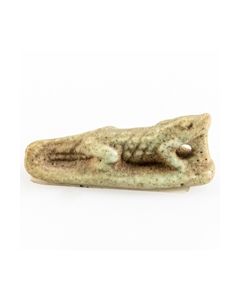 Egyptian crocodile amulet
Egyptian crocodile amuletNice small depiction of a crocodile dating to the Late Period of Ancient Egypt. From the famous collection of Fouad S. Matouk.
Price: on request Flat funerary scarab
Flat funerary scarabNice scarab from turquoise fayence. A special feature are the four drill holes to stitch the piece to a mummy bandage. From the famous Matouk collection.
Price: on request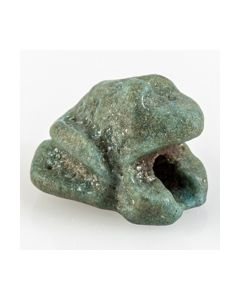 Egyptian frog amulet
Egyptian frog amuletNice small figurine of a frog dating to the Late Period of Ancient Egypt. From the famous collection of Fouad S. Matouk.
Price: on request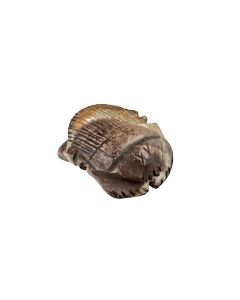 Scarab made of banded stone
Scarab made of banded stoneThis fantastic funerary scarab captivates with the beautiful banded stone it was made of. A piece from the Greco-Roman period.
Price: on request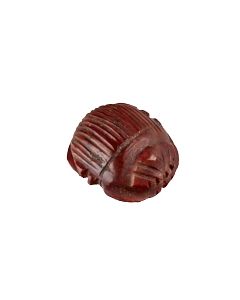 Scarab made of dark red stone
Scarab made of dark red stoneThis fantastic funerary scarab captivates with the beautiful red stone it was made of. A piece from the Greco-Roman period.
Price: on request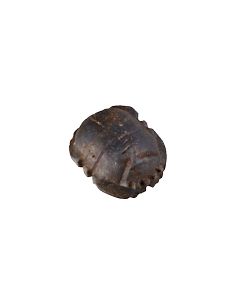 Egyptian scarab
Egyptian scarabFunerary scarab made of dark blue stone. From the greco-roman period of Egypt. A piece from the famous Matouk collection.
Price: on request Mochica stirrup vessel of a dignitary
Mochica stirrup vessel of a dignitaryImposing Peruvian vessel shaped like a man with cloak in his hands. Circa 100 to 500 AD. Exhibited multiple times and published.
€3,050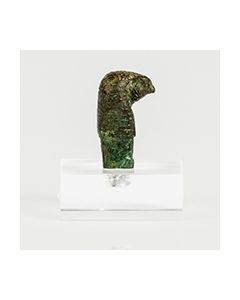 Hawk head of a god
Hawk head of a godDecorative fitting for the rear end of an incense burner dating to the Late Period of Ancient Egypt. A piece from the famous collection of Fouad S. Matouk (1902-1978).
Price: on request Small bronze amulet of a dog
Small bronze amulet of a dogA nice amulet from Ancient Egypt. The rare depiction shows a crouching canid with alert head and ears. A piece from the famous Fouad Matouk collection.
Price: on request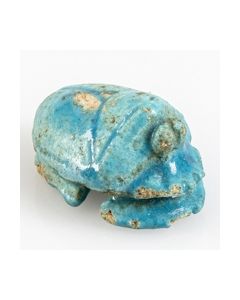 Funerary scarab with animal's head
Funerary scarab with animal's headNaturalistic scarab in turquoise fayence. The head of another animal has been combined with a scarabs body. Late Period of Ancient Egypt.
Price: on request Egyptian mummy cartonnage from Thebes
Egyptian mummy cartonnage from ThebesChest and leg piece of a mummy cartonnage from the ptolemaic period. Covered with polychrome paintings giving an interesting insight into ancient Egyptian funerary rituals.
Price: on request Egyptian tomb relief from Memphis
Egyptian tomb relief from MemphisThe flat relief shows an offering scene and above a hieroglyphic text describing the deceased Ptah-nefer, the priest and the offerings. A translation has been made by the renowned Egyptologist professor Kurth. The work of art dates to the 26th dynasty. It is adopting the style of the Old Kingdom.
Price: on request Egyptian falcon amuletic seal
Egyptian falcon amuletic sealThe seal has the shape of the Horus falcon. Late Period of Ancient Egypt. Coming from the famous Matouk collection.
Price: on request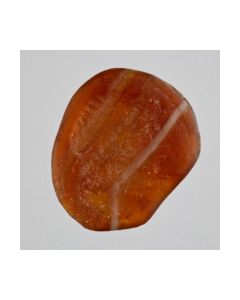 Roman intaglio with greek style bust
Roman intaglio with greek style bustFull beard and curly hair held by a taenia or diadem. The portrait resembles posthumous representations of Philipp II. made by his son Alexander the Great.
Price: on request Ushebti für Wa-ibra-sa-Neith
Ushebti für Wa-ibra-sa-NeithGrabfigur aus Fayance, Spätzeit des Alten Ägypten, ca. 652-332 v. Chr.26. bis 30. Dynastie. Museale Erhaltung!
Price: on request Figure of Anubis from the famous Matouk collection
Figure of Anubis from the famous Matouk collectionRare bronze figure of the canine headed God of Death. From the Late Period of Ancient Egypt.
Price: on request Egyptian coffin with lizard
Egyptian coffin with lizardThe small bronze votive box is adorned with a lizard figure on top. The artefct is from the famous collection of Fouad S. Matouk (1902-1978).
Price: on request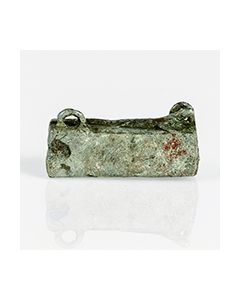 Egyptian votive box with lizard
Egyptian votive box with lizardThe small bronze coffin is adorned with a lizard figure on top. The artefct is from the famous collection of Fouad S. Matouk (1902-1978).
Price: on request Egyptian ibis amulet
Egyptian ibis amuletNice figurine of an ibis dating to the Late Period of Ancient Egypt. From the famous collection of Fouad S. Matouk.
Price: on request Roman intaglio with goddess of victory
Roman intaglio with goddess of victoryThe glass paste features Victoria writing the names of victors in battle on a large shield.
Price: on request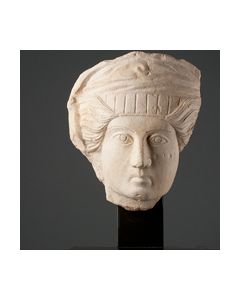 Portraitkopf einer Frau - Palmyra, 2. Jh. n. Chr.
Portraitkopf einer Frau - Palmyra, 2. Jh. n. Chr.Museal erhaltenes Stück. Vollständig, auch die Nase, welche bei antiken Portraits oft abgebrochen ist, ist unbeschädigt.
Price: on request Große Gruppe römischer Tonziegel, meist gestempelt
Große Gruppe römischer Tonziegel, meist gestempelt2012 aus dem Privatbesitz T. Bak erworben, an welchen in dritter Familiengeneration die Sammlung von Professor Josef Lambinet übergegangen ist. Nach Angaben und Dokumenten von Prof. Lambinet wurden die Objekte um 1920 in Mainz gefunden, unmittelbar an der römischen Wasserleitung Mainz-Zahlbach.
Price: on request

